Informationen über Spots bereitstellen
Spot hinzufügen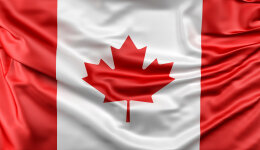
Kitesurfing in Canada
Can you imagine riding the waves with a kite in hand, the Canadian Rockies or pristine blue waters as your backdrop? Kitesurfing in Canada is becoming the adrenaline junkie's dream that you can't afford to miss. From the wild, windy shores of British Columbia to the vast lakes of Ontario, this country offers some of the best spots in the world for kitesurfing.
Canada's diverse weather conditions and stunning locations cater to all skill levels, making it a top destination for kitesurfers of any experience. Whether you're a seasoned rider or just starting out, there's a perfect spot waiting for you. This blog will guide you through the best kitesurfing locations in Canada and what makes them unique, along with tips and tricks to make the most of your adventure. So, are you ready to catch the wind and explore the Canadian waters?
Why Kitesurf in Canada?
Have you ever wondered why Canada has become a kitesurfing hotspot? Beyond just the thrill of riding the waves, Canada's diverse climate, breathtaking scenery, and welcoming kitesurfing community offer unparalleled experiences for enthusiasts. Here’s why you should consider kitesurfing in the Great White North.
Diverse Weather Conditions
Canada's vast size and varied climate create an array of kitesurfing experiences. Whether you like battling strong winds or prefer calm, sunny days, Canada has it all.
- British Columbia: On the west coast, you get consistent winds and year-round conditions perfect for kitesurfing. The waters here vary from chilly to moderately warm in the summer.
- Prairies: In Manitoba and Saskatchewan, you'll find plenty of lakes with steady wind conditions during the summer months.
- Eastern Canada: Nova Scotia and Newfoundland offer something unique with their mix of Atlantic winds and seasonal variations, making every ride a new adventure.
No matter your skill level or preference, there's a spot in Canada that meets your needs. And, with an ever-changing climate, you're guaranteed a unique experience every time.
Scenic Beauty
Imagine soaring over crystal-clear lakes with snow-capped mountains in the background or gliding along the rugged Atlantic coastline. Kitesurfing in Canada isn’t just about the sport; it’s about connecting with nature in some of the most beautiful locations on the planet.
- Rocky Mountains: Kitesurfing in Alberta or British Columbia offers views of towering peaks and lush forests.
- Great Lakes: Ontario and Quebec have vast freshwater lakes, offering expansive spots to ride.
- Atlantic Shorelines: The striking cliffs and rolling waves of the East Coast are perfect backdrops for an exhilarating day on the water.
Every kitesurfing session becomes a visual feast, where you can immerse yourself in natural splendor while catching the wind.
Thriving Kitesurfing Community
Canada is home to a vibrant and supportive kitesurfing community. Local clubs and online forums offer plenty of opportunities for networking and learning. Joining a local group can provide invaluable tips on the best spots, weather conditions, and gear.
- Lessons and Clinics: Many places offer beginner-friendly lessons and advanced clinics, making it easy to pick up or improve your skills.
- Events and Competitions: Throughout the year, various kitesurfing events and competitions take place, bringing together enthusiasts from all over the world.
- Social Networks: There are numerous online communities and social media groups where kitesurfers share experiences, tips, and even organize meetups.
Being part of this thriving community means you’re never alone; there’s always someone to help you out, share a story, or even become a lifelong friend. Whether you're drawn by the promise of diverse weather conditions, the beauty of natural landscapes, or the sense of community, kitesurfing in Canada offers something for everyone. So grab your gear and get ready to explore a world of kitesurfing possibilities in Canada.
Top Kitesurfing Spots in Canada
Canada boasts some of the best kitesurfing locations in the world! From pristine beaches to bustling urban centers, the country offers a variety of spots perfect for every kitesurfer. Here are the top kitesurfing destinations in Canada that you must visit.
Métabetchouan, Quebec
Métabetchouan, located in Quebec, Canada, is a picturesque area known for its natural beauty and outdoor activities, including kitesurfing and kite flying. Situated near Lac Saint-Jean, it offers ideal conditions for kite enthusiasts due to its wide open spaces and favorable wind conditions.
Lake Ontario, Ontario
If you love the idea of urban kitesurfing, Lake Ontario, especially around Toronto, is the spot for you. The lake offers several kitesurfing spots, each providing a unique experience.
One of the best things about kitesurfing on Lake Ontario is the chance to combine your love of the sport with the conveniences of city life. You can easily spend the day on the water and then head into Toronto for a great meal or some nightlife. Whether you prefer Cherry Beach or the Toronto Islands, you'll find top-notch urban kitesurfing experiences here.
Nitinat Lake, British Columbia
If you're looking for a kitesurfing paradise, Nitinat Lake is where you should head. This stunning location offers consistent thermal winds due to its unique geography. The wind usually starts around noon and can blow up to 25 knots in the afternoon, making it perfect for kitesurfing.
Accessibility is surprisingly good. Though tucked away in the wilderness, Nitinat Lake is easily reached by a well-maintained gravel road from Vancouver Island. And let's not forget the local amenities. The campsite right by the lake offers a friendly vibe, complete with clean facilities and a small store for your basic needs. You'll find everything from gear rentals to local eateries nearby, ensuring you have a comfortable stay.
Squamish, British Columbia
Known as the "Outdoor Recreation Capital of Canada," Squamish is a dream come true for kitesurfers. The consistent winds here blow steadily through the Squamish Spit, providing perfect conditions for both beginners and experts. What sets Squamish apart are the breathtaking views. Surrounded by rugged mountains and crystal-clear waters, the scenery is nothing short of spectacular. The well-established kitesurfing facilities here also make it incredibly easy to get started or refine your skills. From gear rentals to professional lessons, everything you need is at your fingertips.
Parlee Beach, New Brunswick
For those on the East Coast, Parlee Beach offers a kitesurfing haven with its sandy beaches and warm waters. The shallow, sheltered waters make it an excellent spot for beginners, while the steady breezes keep more experienced riders coming back for more. One of the highlights of Parlee Beach is its community vibe. Locals and visitors alike gather here, creating a welcoming atmosphere. You'll find plenty of amenities, from picnic areas to nearby cafes, making it easy to spend the entire day on the beach. These top kitesurfing spots in Canada offer a variety of experiences, from serene lakes to bustling urban centers. No matter your skill level or preference, there's a spot perfect for you. So, pack your gear and explore the best kitesurfing destinations Canada has to offer!
Best Time to Kitesurf in Canada
Picking the right season for kitesurfing in Canada can make a huge difference in your experience. Each season offers unique conditions, so understanding what to expect can help you plan your adventure perfectly.
Spring and Summer
Spring and summer are the most popular seasons for kitesurfing in Canada, and for good reason. The warm weather, consistent winds, and longer daylight hours create an ideal environment for hitting the water.
Warm Temperatures: The temperatures during these months are just right, not too hot and not too cold, making it comfortable for kitesurfers to spend long hours on the water. In places like Ontario and British Columbia, the water is warmer and more inviting, perfect for both beginners and experienced riders.
Consistent Wind: Spring and summer bring steady winds that are crucial for a good kitesurfing session. The winds are not only more predictable but also tend to blow at consistent speeds, making it easier for kitesurfers to plan their rides.
Longer Days: With more hours of daylight, you have more time to enjoy the water. This is especially beneficial if you’re travelling to a spot that requires a bit of a drive. You can make the most out of your day, getting in multiple kitesurfing sessions.
Popular Destinations: During these months, places like Squamish in British Columbia or Parlee Beach in New Brunswick come alive with activity. The community vibe is generally more vibrant, with plenty of kitesurfers around to share tips and enjoy the sport together.
Fall and Winter
While fall and winter might not be the first seasons you think of for kitesurfing, they offer unique challenges and opportunities that can be incredibly rewarding.
Cooler Temperatures: The colder months bring a different set of conditions that can be thrilling for those who are prepared. Wearing appropriate gear like wetsuits or drysuits can help you stay warm while you enjoy the sport.
Stronger Winds: Fall and winter often bring stronger, gustier winds. For advanced kitesurfers, these challenging wind conditions can provide an adrenaline-pumping experience. It’s critical to have experience and the right equipment, as the winds can be less predictable.
Off-Peak Benefits: One of the significant advantages of kitesurfing in the off-peak seasons is the lack of crowds. Popular spots are less congested, giving you more space to practice and ride. Plus, accommodations and local amenities are often less expensive during these months.
Choosing the best time to kitesurf in Canada depends on what you’re looking for. Whether it's the warmth and community vibe of spring and summer or the solitude and challenges of fall and winter, Canada has something to offer every kitesurfing enthusiast.
Brief History of Canada
Canada’s history is a rich tapestry woven from diverse cultures, remarkable discoveries, and transformative events. Understanding Canada's past helps appreciate its present, making it an intriguing backdrop for kitesurfing enthusiasts.
Indigenous Peoples and Early Inhabitants
Long before European settlers arrived, Canada's land was home to various Indigenous peoples. These original inhabitants had rich and diverse cultures and societies, each adapted to their specific regions. They lived off the land, using resources sustainably. The First Nations, Métis, and Inuit peoples were the first to navigate the vast Canadian wilderness.
The Age of Exploration
The late 15th and early 16th centuries marked the arrival of European explorers. John Cabot, an Italian navigator, landed on the coast of Newfoundland in 1497, paving the way for further exploration. Jacques Cartier's voyages between 1534 and 1542 were crucial, as they set the stage for French colonization. He explored the Saint Lawrence River, leading to the establishment of New France.
French and British Colonization
The 17th century saw the French establishing colonies along the Saint Lawrence River. Samuel de Champlain founded Quebec City in 1608, which became the heart of New France. However, British forces captured Quebec City in 1759 during the Seven Years’ War. By 1763, the Treaty of Paris ended these hostilities, handing control of Canada to the British.
Path to Confederation
The 19th century was a period of significant growth and change. The fur trade expanded, and settlements spread. In 1867, the British North America Act united three British colonies—New Brunswick, Nova Scotia, and the Province of Canada—into a single country. This act, known as Confederation, marked the birth of the Dominion of Canada on July 1, 1867.
Expansion and Development
Canada rapidly expanded westward and northward post-Confederation. The construction of the Canadian Pacific Railway, completed in 1885, was integral to connecting the vast stretches of land. New provinces and territories joined, including British Columbia in 1871 and Alberta and Saskatchewan in 1905.
World Wars and Modern Era
The 20th century saw Canada emerge on the global stage. Canadian forces played crucial roles in both World Wars, cementing the nation's reputation as a dedicated and capable ally. Post-war, Canada experienced economic growth and cultural evolution. In 1982, the Canada Act was signed by Queen Elizabeth II, giving Canada full sovereignty and establishing its constitution.
Cultural Mosaic
Today, Canada is known for its cultural diversity, welcoming immigrants from all over the world. This diversity is a cornerstone of its identity, contributing to the rich tapestry of Canadian life. Cities like Toronto, Vancouver, and Montreal are thriving hubs of multiculturalism.
Canada’s historical journey from Indigenous lands to a culturally rich and diverse nation sets the stage for its vibrant present. The land’s history is not just a backdrop but an integral part of the experience for any visitor, including those geared up for the thrill of kitesurfing on its pristine waters.
Other Attractions
While kitesurfing is a major draw, Canada offers a wide range of other attractions that can make your trip even more memorable. Whether you're seeking adventure or relaxation, there's something for everyone.
Scenic Hikes
Canada is a haven for hikers, offering trails that suit every skill level. Imagine trekking through lush forests, around crystal-clear lakes, and over rugged mountains. It's a nature lover's dream come true.
Jasper National Park: Situated in Alberta, Jasper offers scenic trails that take you through ancient glaciers, waterfalls, and an abundance of wildlife.
Gros Morne National Park: Located in Newfoundland, this park features striking fjords and dramatic cliffs, making it a must-visit for adventurous hikers.
Bruce Peninsula National Park: In Ontario, the Bruce Trail offers breathtaking views of the Niagara Escarpment and the Georgian Bay.
Urban Excursions
If you love exploring cities, Canada won’t disappoint. Each city offers its own unique blend of culture, history, and modern amenities.
Toronto: This bustling city offers everything from world-class museums to shopping districts like the trendy Queen Street West. Don't miss the iconic CN Tower.
Montreal: Known for its rich history and vibrant arts scene, Montreal combines the old-world charm of cobblestone streets with modern cultural experiences.
Vancouver: Nestled between the mountains and the ocean, Vancouver offers stunning scenery along with a thriving food scene and lively cultural festivals.
Wildlife Watching
Canada's wilderness is home to diverse wildlife. Whether you're in the mountains, by the lakes, or in coastal areas, the opportunity to witness animals in their natural habitat is one you shouldn’t miss.
Whale Watching in British Columbia: Head to places like Vancouver Island for a chance to see orcas, humpback whales, and gray whales.
Polar Bear Watching in Manitoba: Churchill is one of the best places in the world to see polar bears, especially during the fall.
Bird Watching in Ontario: Places like Point Pelee National Park offer incredible bird-watching opportunities, especially during migration seasons.
Cultural Experiences
Canada's multicultural heritage is reflected in numerous festivals, museums, and cultural landmarks. These experiences can add depth and richness to your travel itinerary.
Indigenous Culture: Learn about the First Nations, Métis, and Inuit peoples through various cultural centers and museums across the country.
Music Festivals: From the Toronto International Film Festival (TIFF) to the Montreal Jazz Festival, Canada hosts world-renowned events that attract audiences from around the globe.
Historical Landmarks: Visit places like the Fortress of Louisbourg in Nova Scotia or Old Quebec City to get a glimpse into Canada's colonial history.
Adventure Sports
If kitesurfing gets your adrenaline pumping, you'll find plenty of other adventure sports in Canada to keep the excitement going.
Skiing and Snowboarding: In the winter, head to places like Whistler Blackcomb in British Columbia or Mont-Tremblant in Quebec for world-class slopes.
Mountain Biking: Enjoy thrilling mountain biking trails in places like the North Shore in British Columbia or the Canadian Rockies.
Canoeing and Kayaking: Paddle through serene lakes and rivers in Ontario, or explore the famous Bowron Lake Circuit in British Columbia.
Canada's vast array of attractions ensures that your kitesurfing trip will be complemented by amazing experiences both on and off the water. Whether you're an outdoor enthusiast, a city explorer, or a culture buff, there's something to enrich your journey.
Kitesurfing Tips for Beginners in Canada
Are you ready to dive into the exciting world of kitesurfing in Canada? Before you hit the waves, let’s cover some essential tips to help you get started. From finding the right lessons to understanding local conditions, we've got you covered.
Taking Kitesurfing Lessons
Starting your kitesurfing journey with professional lessons is a smart move. Not only does it make learning safer, but you’ll also progress faster.
Benefits of Professional Lessons
- Safety First: Instructors teach you how to handle equipment correctly, ensuring your safety and that of those around you.
- Solid Foundation: Lessons provide a structured learning path. You’ll master the basics before moving on to more complex maneuvers.
- Equipment Know-How: You’ll learn about different types of gear and how to choose the right setup for various conditions.
- Boosted Confidence: Knowing you’re learning from pros helps build your confidence, letting you focus on enjoying the ride.
Finding Reputable Schools and Instructors
Finding a good kitesurfing school or instructor in Canada is easier than you might think. Check our IKO Center list to find best kitesurfing centers and professional instructors.
How to Get There
Planning a kitesurfing trip in Canada involves a bit of strategizing. From assessing travel options to understanding the best routes, getting to your dream kitesurfing destination is all part of the adventure. Here’s a comprehensive guide to simplify your journey.
By Air
Flying is often the quickest and most convenient way to reach kitesurfing spots across Canada. Most major cities have airports with connections to smaller regional airports.
- Vancouver International Airport (YVR): For kitesurfing in British Columbia, YVR is your best bet. It’s close to popular spots like Squamish and Nitinat Lake. Numerous airlines offer direct flights from various international locations.
- Toronto Pearson International Airport (YYZ): If you’re heading to Ontario’s Great Lakes, Pearson is the primary gateway. From here, you can easily drive or take a regional flight to your specific destination.
- Halifax Stanfield International Airport (YHZ): For East Coast spots like Parlee Beach in New Brunswick, flying into Halifax is convenient. From Halifax, you can drive to various kitesurfing locations.
By Road
Driving gives you the freedom to explore at your own pace and discover hidden gems. Canada’s roadways are well-maintained, making road trips a viable option.
Rental Cars and Vehicles
- Rental Cars: Most major airports have rental car services. Renting a car is ideal if you’re planning to stay for an extended period or want to explore multiple kitesurfing spots.
-
RV Rentals: For a more adventurous experience, consider renting an RV. It doubles as accommodation and transport, giving you flexibility to stay close to kite spots.
Scenic Routes and Highways
- Sea-to-Sky Highway: Travel from Vancouver to Squamish along the Sea-to-Sky Highway. This scenic route offers breathtaking views and is a smooth, enjoyable drive.
-
Trans-Canada Highway: This highway connects most provinces, making it an excellent route for cross-country kitesurfing trips. It passes near many prime kitesurfing locations.
By Ferry
Ferries are an essential part of travel in some regions, especially in British Columbia.
- BC Ferries: If you’re heading to Vancouver Island for spots like Nitinat Lake, BC Ferries offers numerous routes. The ferry ride itself is a picturesque experience, allowing you to relax and take in the coastal scenery.
- Atlantic Ferries: For those kitesurfing on the East Coast, ferries operate between Newfoundland and mainland Canada. These services are a convenient way to access less visited kitesurfing spots.
Public Transport
Public transportation is an option in some regions, but it may limit your flexibility.
- Buses and Trains: VIA Rail and regional bus services can take you to cities and towns near popular kitesurfing spots. However, from there, you may need to rent a vehicle or use local transport to reach specific beaches or lakes.
- Local Transit: Cities like Toronto and Vancouver have robust local transit systems. These can be used to get close to urban kitesurfing spots, but for more remote areas, a car is typically necessary.
Travel Tips
Traveling in Canada, especially to kitesurfing spots, can be straightforward with a little planning.
Check Conditions: Always check weather and road conditions before you travel. Canada’s weather can change rapidly, especially in mountainous or coastal areas.
Pack Smart: Ensure you pack all necessary kitesurfing gear. Also, bring warm clothing and rain gear as Canadian weather can be unpredictable.
Plan Ahead: Book accommodations in advance, especially during peak kitesurfing season. Popular spots can fill up quickly, and camping sites may require reservations.
Navigating your way to Canada’s top kitesurfing destinations is part of the adventure. Whether you fly, drive, or take a ferry, each route offers its own set of unique experiences. So gear up and get ready to explore the stunning landscapes while riding the winds in Canada.
Kitesurfing in Canada offers an incredible mix of thrilling adventures, scenic beauty, and a welcoming community. Whether you're battling strong winds on the West Coast, gliding over the Great Lakes, or catching Atlantic breezes, each spot has its unique charm.
Don’t miss out on these amazing experiences. Share your kitesurfing stories and join the enthusiastic community that makes this sport so special.
Grab your gear, hit the road, and explore the fantastic kitesurfing destinations Canada has to offer!
USEFUL RESOURCES
Beste Saison
Spring and summer are the most popular seasons for kitesurfing in Canada, and for good reason. The warm weather, consistent winds, and longer daylight hours create an ideal environment for hitting the water
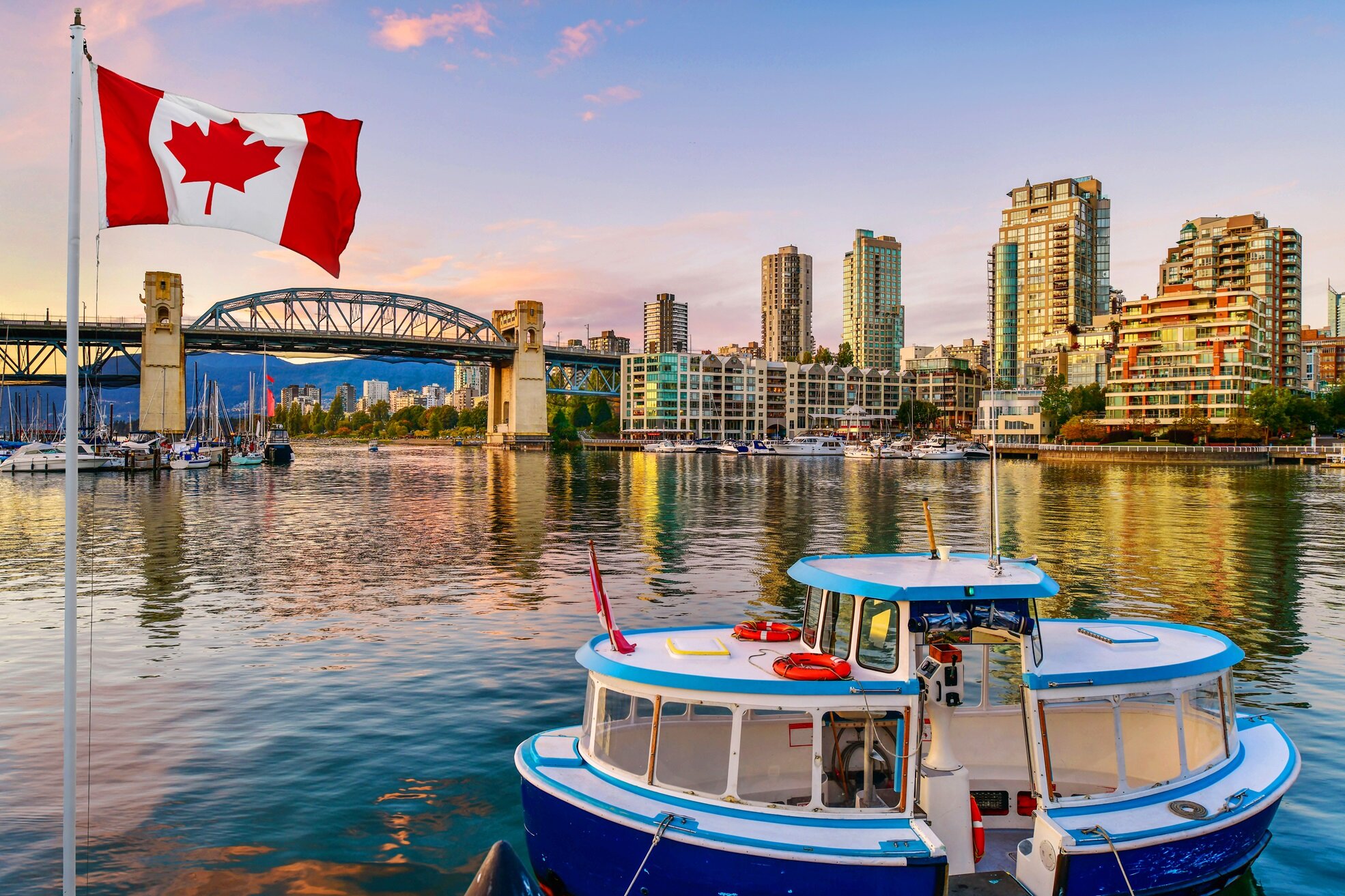
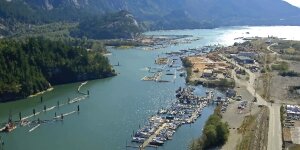
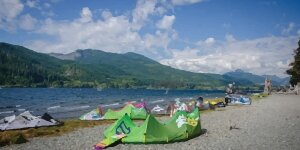

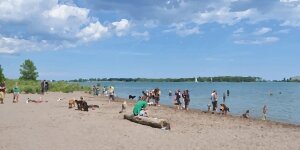
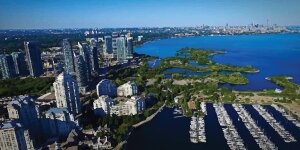
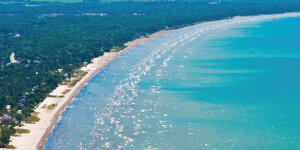
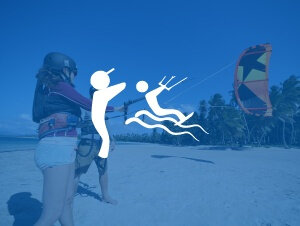

.png)

